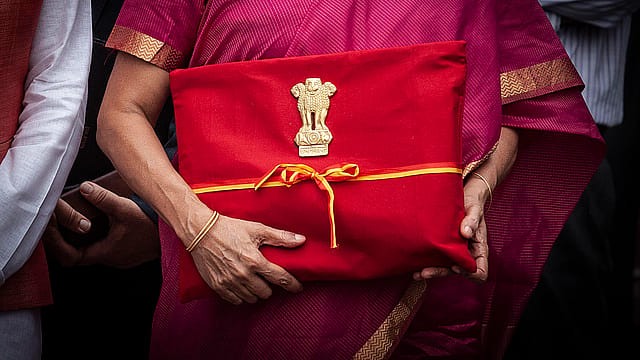Budget 2019: Good to have an aspirational target
ADVERTISEMENT

With an aspirational vision to strive for a $5-trillion economy, expectations were high from stakeholders, given the unprecedented mandate for Modi 2.0. The Union Budget 2019 has come at a critical point where the economy needed a makeover by providing an impetus to several sectors, particularly agriculture, rural infrastructure, startups, and micro, small, and medium enterprises (MSMEs). Equally crucial was the need to grow foreign investment, identify alternatives to tap capital and manage the current account deficit by raising exports. Finance minister Nirmala Sitharaman trotted through the Budget proposals keeping in mind multiple objectives and the need to increase tax and non-tax revenues with a close eye on the fiscal deficit. Keeping the interests of the farmer and the common man paramount, she did not hesitate in taking a stern step to tax the rich and equally boldly increasing the country’s debt by tapping foreign sources of capital.
Back in 2014, the Indian economy was a shade lower than close to $2 trillion. In the past five years, it has grown close to $3 trillion and is expected to cross this mark by this fiscal year end. As India strives for growth, an energised focus on social outcomes is equally pivotal for achieving economic goals. These past five-six quarters have been strenuous as far as growth was concerned, for financial resources have been limited, impacting the ability to ignite the engines of growth. The finance minister has balanced allocations across development, fiscal prudence, and socio-economic priorities. The recent Economic Survey for 2018-19 reflects a five-year blueprint for becoming a $5-trillion economy by pushing investment (particularly in the private domain), promoting exports, nourishing MSMEs, and ensuring policy consistency. Most Budget proposals were in that direction.
January 2026
Netflix, which has been in India for a decade, has successfully struck a balance between high-class premium content and pricing that attracts a range of customers. Find out how the U.S. streaming giant evolved in India, plus an exclusive interview with CEO Ted Sarandos. Also read about the Best Investments for 2026, and how rising growth and easing inflation will come in handy for finance minister Nirmala Sitharaman as she prepares Budget 2026.
Boosting the rural economy, agriculture, and allied sectors which include farmer insurance got extensive focus. Health and education, though not much in terms of outlay, will receive closer attention in terms of outcome, given the sharpening of Modicare health insurance announced in the Interim Budget. The objective of making India a global ecosystem for a skilled workforce is another positive parameter that would contribute to the government’s medium- to long-term growth agenda.
The government’s persistent commitment to ‘Digital India’ was supplemented with measures such as mandatory digital payment options for businesses and the introduction of a 2% withholding tax where annual cash withdrawal from each bank account exceeds ₹1 crore. This is suggestive of a well-thought out initiative for a technology-driven 360-degree facelift to facilitate the vision of Digital India. Higher allocations seem to be a serious attempt to reform the tax administration by way of investments to upgrade its system to serve taxpayers as well as deal with errant taxpayers. This, coupled with tax administration proposals for faceless assessments, specified criteria for mandatory filing of tax returns, and automatic refunds, is an impetus to the government’s long-standing objective of expanding the tax base and disincentivising the cash economy with the use of data mining tools. Aadhaar-PAN interchangeability is a smart move of a futuristic single-identification number, as people cannot say they do not file returns because they do not have a PAN.
MSMEs received much-needed attention with an interest subvention of 2% on loans. The ‘no tax scrutiny’ policy extended to startups to ease angel tax woes concerning share valuation issues is perhaps a well-kept promise to boost the entrepreneurial spirit.
The most-debated measure was the introduction of two additional levels of surcharge on individuals by way of ‘Robin Hood Tax’ to partly fund the government’s tax revenues and meet the enhanced outlay for the farm sector. The extension of the turnover threshold (up to ₹400 crore) for reduced 25% corporate tax now covering 99.7% of corporates is keeping in mind the promise made in Budget 2015.
Boosting the ‘Make in India’ initiative, import tariffs on finished and intermediate goods will give an inverse stimulus to the domestic manufacturing sector.
Industries which are likely to benefit include chemicals, textiles, base metals, food processing, consumer durables, defence, and automobiles. As a direct consequence of all these measures, it is anticipated that exports would get a boost—a critical priority to stimulate economic growth for reducing the current [account] deficit. The tax amnesty scheme for legacy dispute resolution under the erstwhile service tax and excise laws aimed at unlocking over ₹3.75 lakh crore in disputes is path-breaking. The relief proposed varies from 40% to 70% of tax dues depending on the quantum in dispute of tax dues and provides for full relief from payment of interest and penalty. Overall, the Budget seems like a calculated bet at a time when the GDP growth slowdown appears to have bottomed out. It assumes an aggressive 19% increase in net tax revenues (based on tax collection figures as per the Economic Survey) and 11% compared to revised estimates. The non-tax revenues are bold which bank on the RBI’s release of reserves, aggressive divestment proceeds, and healthy dividends from profitable public sector undertakings. I guess, with a multitude of challenges, betting on growth is the only option.
Views are personal. The author is founder and managing partner of BMR Legal Advocates. He was assisted by his associates Joseph K. Antony and Riya Gupta.
This was originally published in the August, 2019 issue of the magazine.
